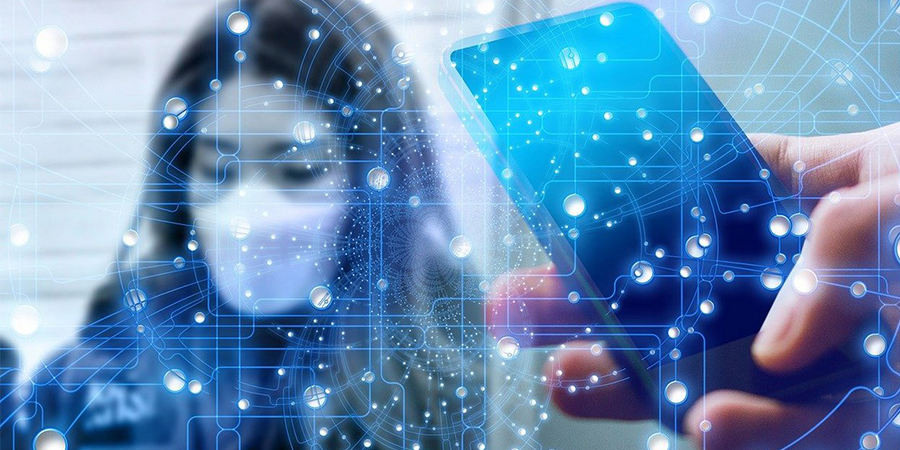There is no denying how technology helped the world navigate through the virus-laden pandemic even as businesses are getting back on track to reboot the slackened economies. The return to a ‘new normal’ will warrant workspaces to develop solutions to protect employees and keep the virus at bay by cleaning and disinfecting the sources of exposure, routes of transmission, and other unique characteristics of the virus.
Here are some of the technologies that have proved successful in the fight against the Covid-19 virus spread at workplaces.
Disinfecting Robots: Ultraviolet disinfecting robots (UVDR) uses high-frequency ultraviolet light to penetrate cell membranes and destroys DNA and RNA structure of microorganisms, making it a perfect weapon against microorganisms like the coronavirus that can be found on surfaces and infects anyone who comes in contact with it. Disinfecting robots autonomously navigate hospital spaces. An operator can direct the robot into a contaminated room and run the disinfecting program. One ultraviolet treatment from the robots can eliminate up to 99.99% of bacteria in a room.
Active ventilation filter: Building ventilation and cooling systems can pick up coronavirus particles expelled by the patient and spread them widely through indoor spaces. That makes HVAC systems make the first line of defense against Covid 19. A new HVAC filter developed through a collaboration of Houston based company uses a heated filter made of nickel foam. The filter is encased in a fire-retardant frame and uses heat and UVC to catch and kill 99% of coronavirus microbes as well as bacteria and anthrax spores. And while the filter is heated to high temperatures, it does not heat the air passing through it.
Food delivery robots: We have seen drones delivering medical supplies in many parts of the world as well as the trials of fully driverless cars. However, the ground-based food delivery vehicles moving at pedestrian speed are proving handy in the pandemic situation. The battery-powered robots can travel along city sidewalks 4 miles per hour and is capable of identifying pedestrians and other obstructions. Store worker can load food and groceries inside an insulated compartment and enter delivery location data and the robots are able to do the rest of the task.
Open-sourced printed protective equipment: Open-source designs of personal protective equipment enable manufacturers to produce the equipment anywhere quickly and reduce the supply chain pressure for the availability of items such as face masks and gloves. Open-sourced 3-D designed, prototyped, and medically verified equipment can be downloaded and printed to stock vending machines that can dispense masks and gloves for employees at all times. Organisations can also provide UV sanitisation stations for disinfecting of personal items like mobile phones and laptops.
Automated health checkpoint Kiosk: Keeping Covid-infected workers away from office environments are necessary to stopping the spread of the virus. Manual temperature check procedures are time-consuming and create queues causing unintentional close contacts. Automated kiosks systems not only take a person’s temperature but also uses facial recognition technology (FRT) to check if they are wearing a face mask.
Distance assistant technology: Distance assistant technology helps workers maintain the required distance from others. Developed by engineers at Amazon during the COVID-19 pandemic, the technology uses artificial intelligence, machine learning and cameras to alert people on a 50-inch monitor when they are fewer than six feet away from others. The device requires an electrical outlet to be implemented. The process to open source the software and AI behind this innovation was also initiated for any organization to develop their distant assistant.
Contact tracing apps: Contact tracing apps uses Bluetooth technology to pick up signals from nearby mobile phones that also have the app installed. The app on both the devices exchange encrypted Secure Tracing Identifier (STI) and store it on the devices. The STI in each device will, therefore, be a list of all persons in close contact with the user. When one of the users is infected with the virus, the authorities will request the infected user to upload the list of STI stored on his or her device. Also, a user who has tested positive can contact the authorities to share details of STI. Further instructions from health authorities on safety protocols will be issued.
Wearable technologies: Wearables technologies are becoming a go-to weapon in the continuing battle against Covid and its emerging variants. wear electronic monitoring bracelets that ensure they remain in tight quarantine. The bands vibrate or buzz when people get within six feet of each other, and collect location data to trace people who came in contact with someone who are covid-positive. Using data from smartwatches that track resting heart rate and respiration to monitor spikes that might indicate a viral invader.
QR codes and NFC technology: A technology that traces its beginnings in the 90s, the Quick Response (QR) codes can be scanned using smartphones to link information, including names, locations and website addresses minus the need for physical contact. From sharing business cards for networking to payments and ordering items in the menu, QR tech is being used across sectors. Near field communications (NFC) technology allows two NFC-enabled devices to communicate at close distances (about 4 centimeters). Using NFC technology payments can be made by tapping NFC-enabled smartphones or NFC-enabled cards on or near NFC payment acceptance devices. Contactless technologies such as NFC tags and QR codes are in great demand because of their zero-touch capabilities. Another technology working on the zero-touch principle aided by IoT is the ‘air button’ technology that allows users to operate devices such as car dashboards, ATMs, and other command devices without physically touching the surfaces to curb the spread of the virus.










